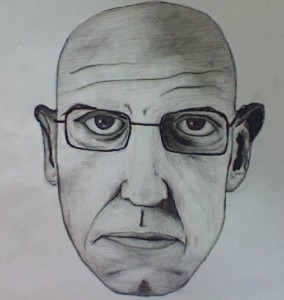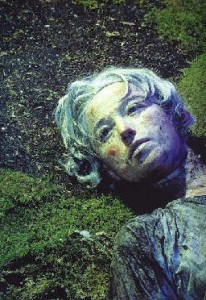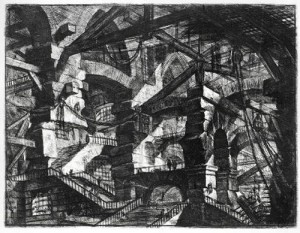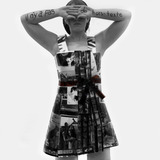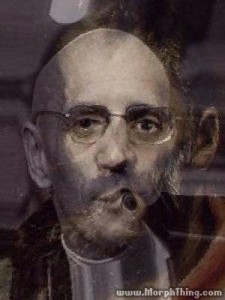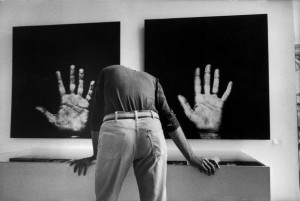Trans. Donald F. Bouchard and Sherry Simon. In Language, Counter-Memory, Practice. Ed. Donald F. Bouchard. Ithaca, New York: Cornell University Press, 1977. pp. 124-127.
In dealing with the “author” as a function of discourse, we must consider the characteristics of a discourse that support this use and determine its differences from other discourses. If we limit our remarks only to those books or texts with authors, we can isolate four different features. First, they are objects of appropriation; the form of property they have become is of a particular type whose legal codification was accomplished some years ago. It is important to notice, as well, that its status as property is historically secondary to the penal code controlling its appropriation. Speeches and books were assigned real authors, other than mythical or important religious figures, only when the author became subject to punishment and to the extent that his discourse was considered transgressive. In our culture and undoubtably in others as well, discourse was not originally a thing, a product, or a possession, but an action situated in a bipolar field of sacred and profane, lawful and unlawful, religious and blasphemous. It was a gesture charged with risks before it became a possession caught in a circuit of property values. But it was at the moment when a system of ownership and strict copyright rules were established (toward the end of the eighteenth and beginning of the nineteenth century) that the transgressive properties always intrinsic to the act of writing became the forceful imperative of literature. It is as if the author, at the moment he was accepted into the social order of property which governs our culture, was compensating for his new status by reviving the older bipolar field of discourse in a systematic practice of transgression and by restoring the danger of writing which, on another side, had been conferred the benefits of property.
Secondly, the “author-function” is not universal or constant in all discourse. Even within our civilization, the same types of texts have not always required authors; there was a time when those texts which we now call “literary” (stories, folk tales, epics and tragedies) were accepted, circulated and valorized without any questions about the identity of their author. Their anonymity was ignored because their real or supposed age was a sufficient guarantee of their authenticity. Text, however, that we now call “scientific” (dealing with cosmology and the heavens, medicine or illness, the natural sciences or geography) were only considered truthful during the Middle Ages if the name of the author was indicated. Statements on the order of “Hippocrates said…” or “Pliny tells us that…” were not merely formulas for an argument based on authority; they marked a proven discourse. In the seventeenth and eighteenth centuries, a totally new conception was developed when scientific texts were accepted on their own merits and positioned within an anonymous and coherent conceptual system of established truths and methods of verification. Authentication no longer required reference to the individual who had produced them; the role of the author disappeared as an index of truthfulness and, where it remained as an inventor’s name, it was merely to denote a specific theorem or proposition, a strange effect, a property, a body, a group of elements, or a pathological syndrome.
At the same time, however, “literary” discourse was acceptable only if it carried an author’s name; every text of poetry or fiction was obliged to state its author and the date, place, and circumstance of its writing. The meaning and value attributed to the text depended upon this information. If by accident or design a text was presented anonymously, every effort was made to locate its author. Literary anonymity was of interest only as a puzzle to be solved as, in our day, literary works are totally dominated by the sovereignty of the author. (Undoubtedly, these remarks are far too categorical. Criticism has been concerned for some time now with aspects of a text not fully dependent upon the notion of an individual creator; studies of genre or the analysis of recurring textual motifs and their variations from a norm other than author. Furthermore, where in mathematics the author has become little more than a handy reference for a particular theorem or group of propositions, the reference to an author in biology or medicine, or to the date of his research has a substantially different bearing. This latter reference, more than simply indicating the source of information, attests to the “reliability” of the evidence, since it entails an appreciation of the techniques and experimental materials available at a given time and in a particular laboratory).
The third point concerning this “author-function” is that it is not formed spontaneously through the simple attribution of a discourse to an individual. It results from a complex operation whose purpose is to construct the rational entity we call an author. Undoubtedly, this construction is assigned a “realistic” dimension as we speak of an individual’s “profundity” or “creative” power, his intentions or the original inspiration manifested in writing. Nevertheless, these aspect of an individual, which we designate as an author (or which comprise an individual as an author), are projections, in terms always more or less psychological, of our way of handling texts: in the comparisons we make, the traits we extract as pertinent, the continuities we assign, or the exclusions we practice. In addition, all these operations vary according to the period and the form of discourse concerned. A “philosopher” and a “poet” are not constructed in the same manner; and the author of an eighteenth-century novel was formed differently from the modern novelist.
